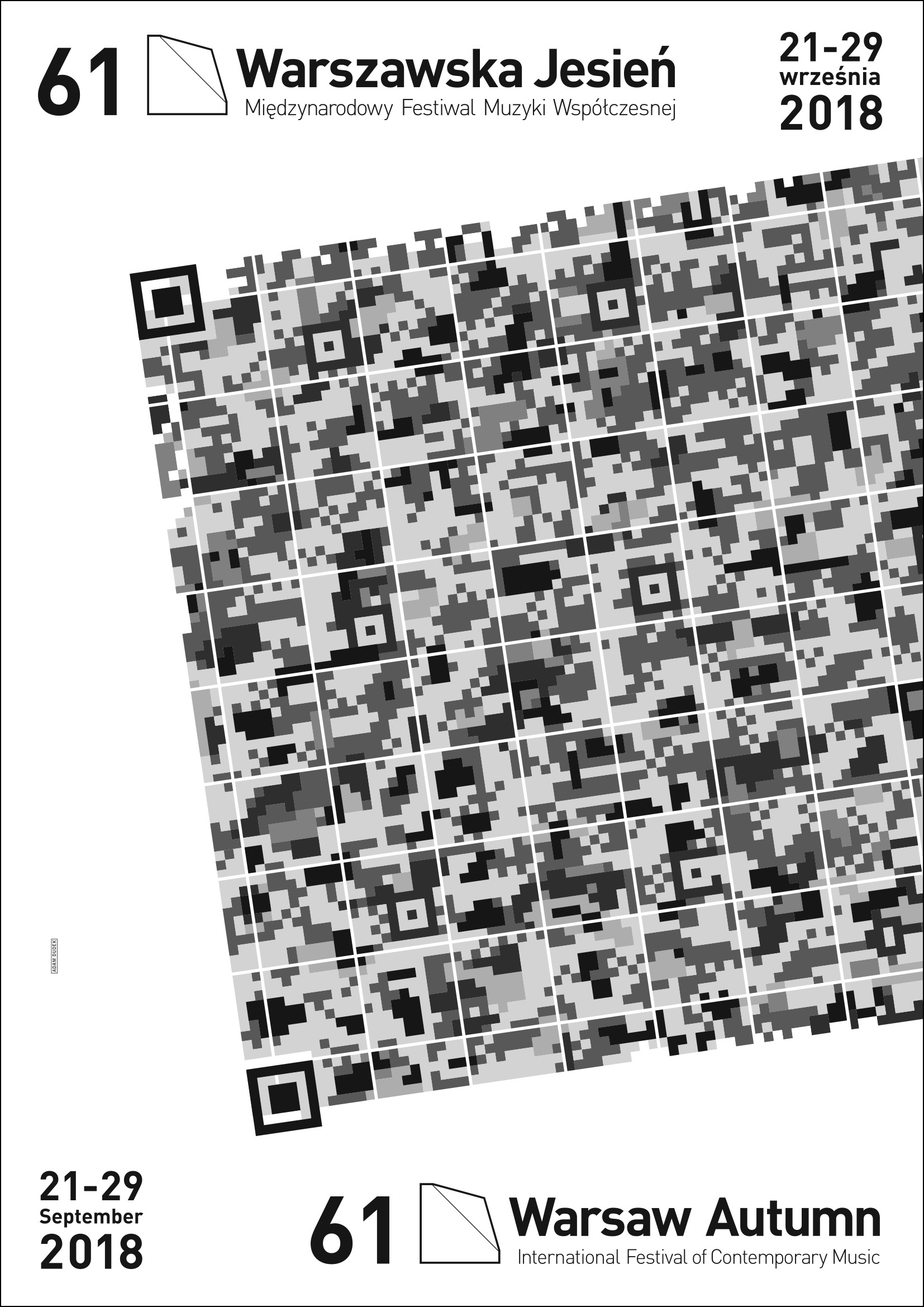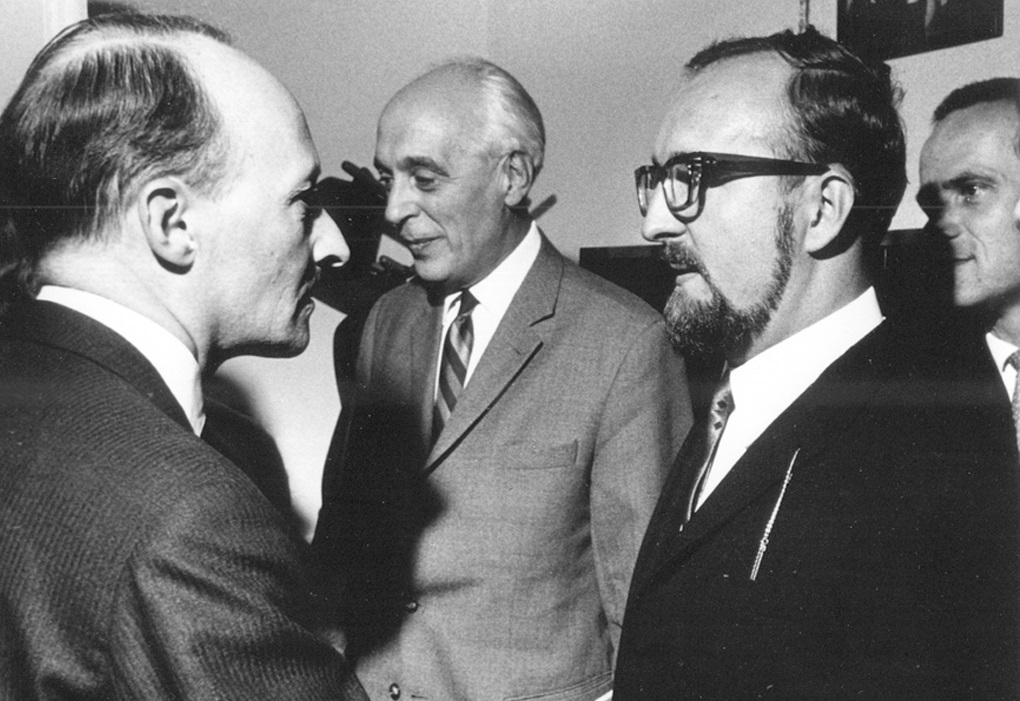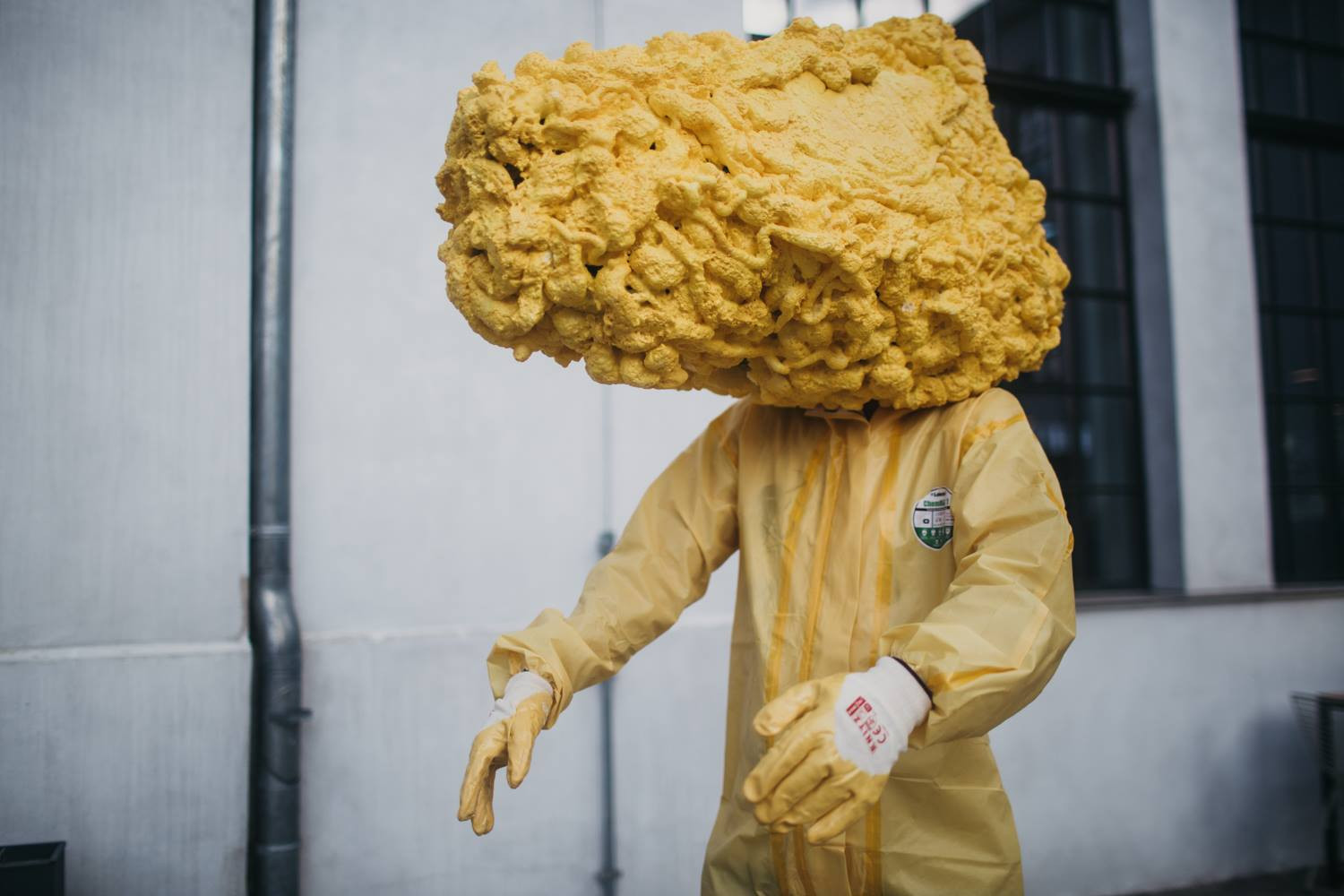
Try competing with history, then
The Warsaw Autumn festival is heavy, almost overloaded, with history. A source of national pride in a country where Penderecki is a household name, it is held up as a prime example of Polish resistance against Soviet occupation.
The festival, founded in 1956, was originally a chance for music from the West to get through the Iron Curtain in post-war Europe, and also an opportunity for repressed artists to have their works performed – for some reason, the Cold War authorities were more lenient with contemporary composition than with other art forms, to the point where some performance art pieces were purposefully labelled as compositions to avoid the censors.
Somehow this festival of contemporary art music had to act as a celebration of national pride and a discussion of current political concerns
2018 marks the 100th anniversary of the Second Polish Republic, established after more than a century of occupation, so this year’s Warsaw Autumn, with theme of Res Publica, had a heavy emphasis on politics. Which meant the stakes were high. Somehow this festival of contemporary art music had to act as a celebration of national pride and a discussion of current political concerns. It had to reaffirm the values of a country currently in the process of intense soul-searching about what those values actually are. And on top of that, the not-small task of putting on an edifying festival of contemporary music.
Politically charged
The festival’s approach, both its successes and its failures, were perhaps best encapsulated in a concert with Kwartludium, a quartet of violin, clarinet, percussion and piano. All of the programmed pieces had a political slant, either implicit or explicit.
Krzysztof Wołek’s Amplified, What Is There? (2018) explored the politics of sound, where incredibly quiet noise-sounds from the instruments were amplified to grotesque proportions. Wojciech Błażejczyk’s General Theory of Relativity (2018) used samples from Kellyanne Conway’s notorious ‘alternative facts’ speech and from Donald Trump’s usual ramblings, and mixed tape playback, mimed playing and live performance until it wasn’t clear what was ‘real’ and what was pre-recorded. Point made.
... used samples from Kellyanne Conway’s notorious ‘alternative facts’ speech and from Donald Trump’s usual ramblings
Fredrik Gran’s Vold (2018) turned distorted pop music samples into quiet, meditative atmosphere music. And the Swedish-Israeli composer and improviser Dror Feiler’s Goethe im Schlachthof (2018) was a colossal wall of sound, with the composer himself onstage playing saxophones and synths (in Feiler’s own words, his music ‘does not describe a struggle, it is a struggle’).
Four pieces, thematically linked, artfully arranged into a satisfying concert. But it was not so simple – inserted between Błażejczyk and Gran was a performance of Bernhard Lang’s 25-minute long DW29 – Loops for Paweł Szymański (2017), for two accordions, neither of whom were present onstage for any of the other pieces.
The piece was out of place in every way: style, instrumentation, duration. There was also no obvious thematic link – Lang’s carefree minimalist loops became almost frivolous next to the other politically charged pieces at this festival with such cultural baggage. Without this performance, Gran’s airy and contemplative Vold would have provided a restful peak in the programme. Instead, the concert became an endurance test for audience members, several of whom left.
Forget the politics of Poland – the politics of festival programming came to the fore instead
There was no conceivable reason for this piece to be in the programme, had it not been for a performance of Lang’s DW28 – Loops for Davis (2017) in the previous evening’s Warsaw Philharmonic concert. Lang, born in 1957, is a well-known name and was present at the concert – so why not programme another one of his pieces, the organisers must have thought. Forget the politics of Poland – the politics of festival programming came to the fore instead.
Discipline!
This tension between the freshness required of a contemporary music festival on one hand and the awareness of tradition and history on the other was a recurring theme throughout this year’s pieces and programming. There was an abundance of pieces about pieces, music about music, works of art about creating works of art.
There was an abundance of pieces about pieces, music about music
For example, Piotr Peszat’s The Artist’s Way (2017), an orchestral piece with a video of a crying actor, that sampled emo blog posts and turned them into an auto-tuned chorale. Or Allan Gravgaard Madsen’s Suite (2018), premiered by Ensemble Recherche, which assembled a collection of neo-Baroque movements with titles like ‘Gigue’ or ‘Air’. Or Agata Zubel’s opera Bildbeschreibung (2016), in which the two characters were figures in a painting, and the libretto described the painting they were in. Or Stefan Prins’ Piano Hero cycle (2011-), where a pianist triggered video samples of someone playing inside a piano frame, before a webcam of the pianist was played in its place.
But for me some of the most interesting moments happened when the cultural baggage surrounding the concert-form and the festival (especially this festival) were examined, challenged, celebrated or critiqued, rather than just held up or winked at. Trond Reinholdtsen’s Ø – Episode 6 (2015), performed by Kraków-based Spółdzielnia Muzyczna and the composer himself, was an ingenious piece of programming. The piece, which is part of Reinholdtsen’s The Norwegian Opra project, was actually three pieces in one: a video, a slide presentation and an ensemble piece.
... before leading the audience members outside to put trash in a pile with two companions
Right from the start the audience was challenged – the seating in the hall was set up in such a way that it was impossible to get a clear view of all three parts at once, and so the audience member must choose his or her own experience of the piece. The video consisted of three protagonists, each discussing their own theory of the evolution of human society, arguing with each other, starting an orgy, discovering new media – all in a quest to explore and learn about the papier-mâché cartoon world they live in. Played concurrently to this video was the live ensemble music conducted by Reinholdtsen – who also occasionally ran over to the slide presentation to talk about his work and describe the Opra project in more detail.
At the end, the yellow-headed protagonist from the video emerged from behind the screen and into the hall, before leading the audience members outside to put trash in a pile with two companions, all the while chanting ‘discipline, discipline, discipline!’. The work was overwhelming in the best sense – a celebration of futility, but not in a mean-spirited way. Reinholdtsen’s own commitment, both in the making of the video and in the live performance, rescued the work from being a mere commentary – at the end of the piece, where the three characters are blown away in an audio explosion, they were still rolling away long after the audience applause had stopped.
Please wait in line
Similarly, Paweł Mykietyn’s orchestral work Herr Thaddäus (2017) aimed at a total-immersion concert experience. The orchestra was placed around the audience, some on raised scaffolding. The piece was a thirty-eight-minute long collage of overlapping pulses, accelerating and decelerating independently of each other. The hall was full of smoke, which effectively set off the lighting design, and the audience was requested to put on metallic thermal blankets. The tape part consisted of a dramatic singing of national poet Adam Mickiewicz’s Herr Thaddäus (1834), translated into early 20th-century-style German.
I spoke with several young composers who had works cancelled because their projects were denied funding
As a non-Pole who was unfamiliar with the importance of the text, I missed the nationalist point being made (and the point of translating it into an outdated style of German), but the staging of the piece and the incessant character of the music left a strong impression. What left an even stronger impression was the sight of a queue of audience members lining up to get Mykietyn’s autograph after the concert.
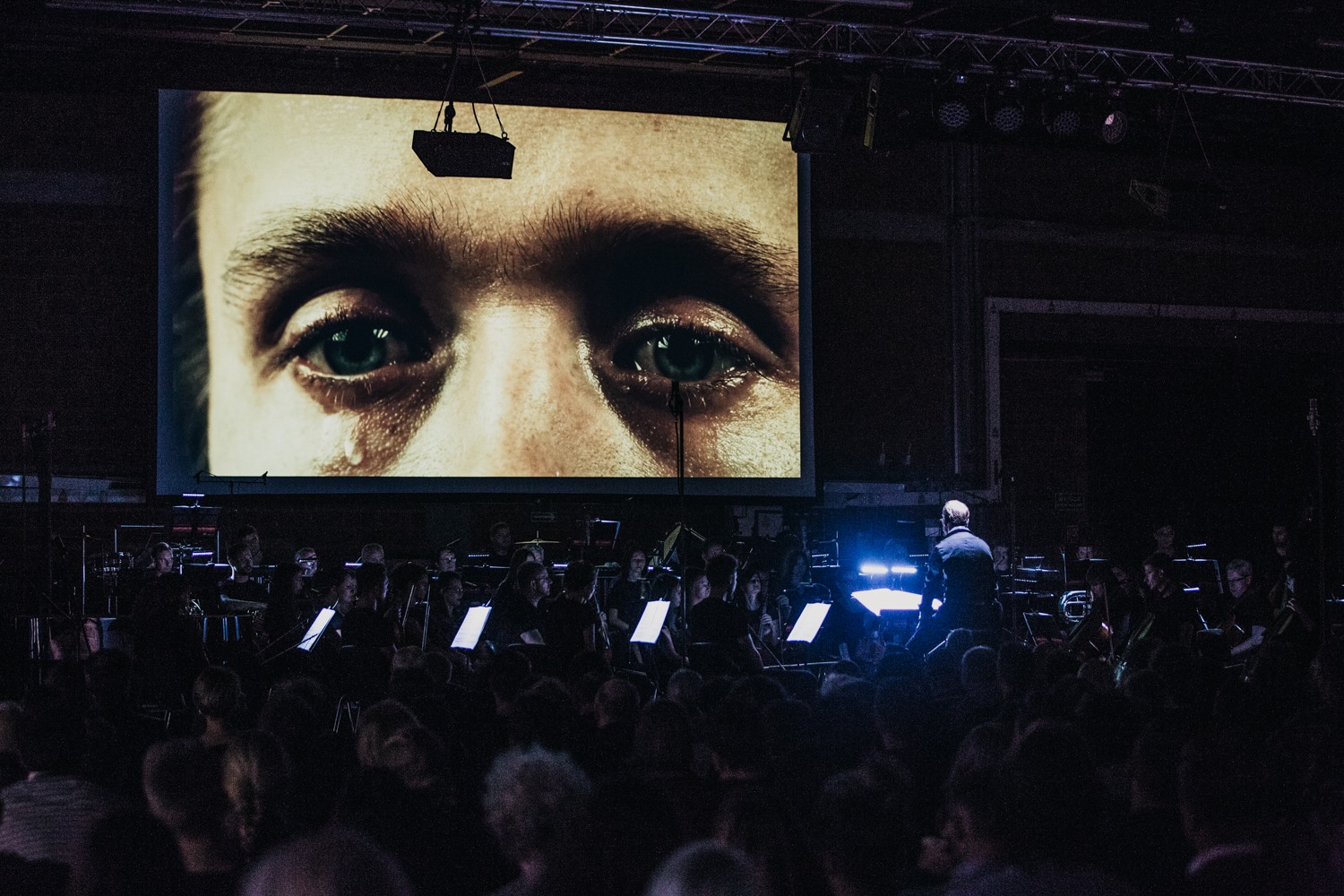 The crying actor in Piotr Peszat’s ‘The Artist’s Way’. © Grzegorz Mart
The crying actor in Piotr Peszat’s ‘The Artist’s Way’. © Grzegorz Mart
Victim of its own success
This year’s programme had a majority of older composers on the programme, and I spoke with several young composers who had works cancelled because their projects were denied funding.
Meanwhile, Andrzej Krzanowski’s (1951-90) Programme V from 1977 received a full production, complete with video, dancers, TV cameras, scents, candies distributed to the audience, and so on. The piece clearly held some importance to the Polish audience (denied to the rest of us due to a lack of English subtitles), but neither the music nor the production itself could be described as ‘contemporary’. As my Polish friend said to me afterwards, ‘You know how it is when you die and then 30 years later your friends stage your unperformed opera’ – which just about sums it up.
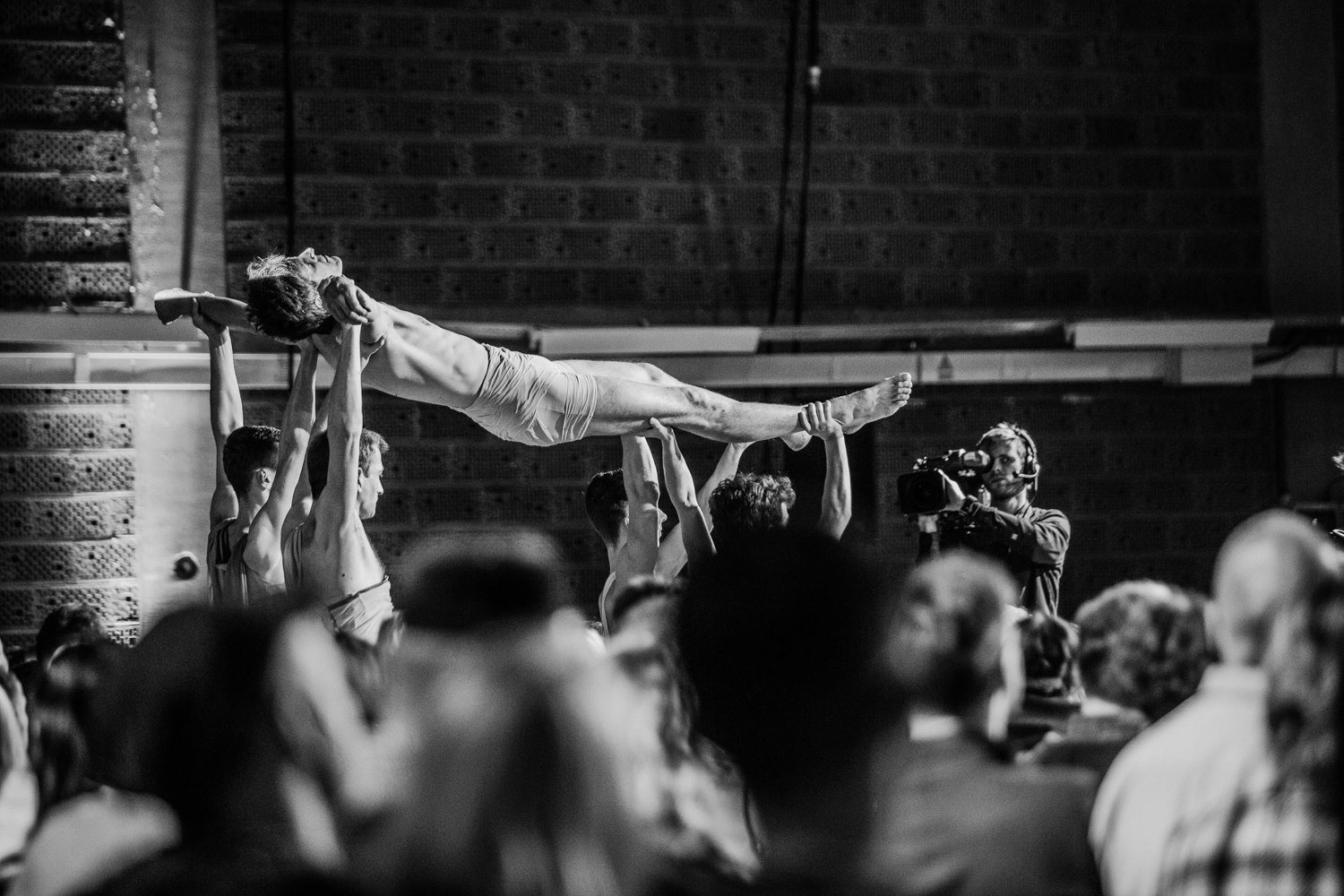 Andrzej Krzanowski’s ‘Programme V’ received a full-scale production. © Grzegorz Mart
Andrzej Krzanowski’s ‘Programme V’ received a full-scale production. © Grzegorz Mart
But age is just a number, and conservative attitudes are not bound to a particular age group. For me the freshest-sounding piece of the aforementioned Ensemble Recherche concert was written by the 81-year-old Zbigniew Bargielski, whose Anilo – VI – Klänge (2018) was a happily bizarre mishmash of nonsense sounds, ensemble playing, and designer T-shirts.
As for the very young composers, whose works were mostly represented at the fringe events of the festival, they all seemed to share a homogeneity of both style and approach: heavy ensemble pieces with oppressive electronics. I asked around several young composers as to why they all used similarly sounding electronics in similar ways, and was mostly met with a response of ‘because that’s the way it’s done’.
Becoming a successful part of the establishment comes at a price, and the price here is a loss of edge due to the pressures of ‘the tradition’
Is it possible for a contemporary music festival to become a victim of its own success? Warsaw Autumn obviously has its place in Polish cultural life, and it clearly feels the responsibilities of its position. Becoming a successful part of the establishment comes at a price, and the price here is a loss of edge due to the pressures of ‘the tradition’.
But the part of the festival’s tradition – probably the most important part – that stood for resistance and defying convention was quite invisible in this year’s edition. Festival director Jerzy Kornowicz’s closing speech emphasised the role of Warsaw Autumn as a safe space for community and togetherness in turbulent political times. Perhaps this space has become a little too safe.
